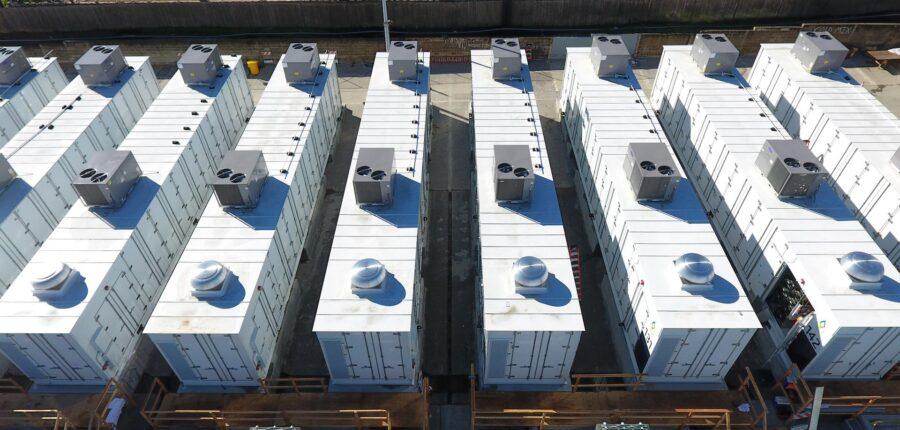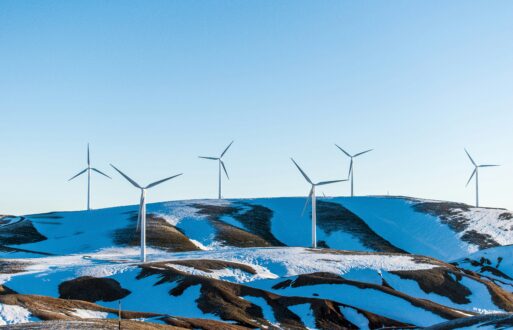While integrating wind and solar energy sources into the grid will help the energy industry reduce its carbon emissions, there is one significant downside to these renewables – they’re intermittent. This issue is why energy storage will play a key role in modernizing the U.S. electric grid.
Here’s a look at where we are today and a look into the future of utility-scale battery energy storage.
Utility-Scale Battery Storage Today
Driven in part by advancements in the electric vehicle battery space, utility-scale battery energy storage has seen significant technological advancements in recent years. Changes in chemistry have led to more efficient, better performing, and higher capacity batteries. In addition, costs are rapidly declining, propelling the growth of grid-scale battery energy storage systems across the country.
From 2016 to 2020, the U.S. tripled its grid-scale battery energy power capacity (the amount of power a battery can discharge), according to the U.S. Energy Information Administration (EIA). They report that by the end of 2020, large-scale battery power capacity reached 1,650 MW (1.65 GW). Recent estimates indicate that storage capacity jumped an additional 300% in 2021, adding between 4.2 GW and 4.5 GW of capacity to the grid.
Utilities Are Investing in Battery Storage
California is leading the way in its decarbonization efforts and, accordingly, the development of battery storage installations. The EIA reports that the state has 506 MW of battery storage power capacity. Texas, Illinois, Massachusetts, and Hawaii each have more than 50 MW of power capacity.
Some notable utility-scale projects completed in 2021 include:
- Phase II construction of the Moss Landing Energy Storage Facility in Monterey, California, added 100MW of storage capacity. The facility now has 400MW 750MW in total capacity.
- Texas saw a combined 200MW of transmission-level battery storage capacity added with the commissioning of projects at Broad Reach Power’s North Fork and Bat Cave facilities.
- Florida Power and Light’s Manatee Energy Storage Center, connected to the utility’s Manatee Solar Energy Center, has nearly 53,000 batteries in on-site energy storage containers providing 409 MW of storage capacity.
Capacity Growth Trends to Continue
Capacity is expected to continue its rapid growth. The EIA is predicting that another 10 GW will come online in the next two years, the majority of which will be tied to solar generation plants, taking advantage of natural synergies between the technologies.
U.S. lithium-ion battery manufacturing capacity is also expected to see significant growth in the coming years. BloombergNEF predicts the industry will produce nearly 100 GWh per year by the end of 2022.
The Price of Advancing Technology
Technological advancements don’t often come cheap. The U.S. federal government and the Biden administration have committed to investing billions of dollars to propel clean energy technologies, including battery energy storage.
The Infrastructure Investment and Jobs Act (IIJA), signed in late 2021, includes $3 billion to boost battery manufacturing and recycling efforts in the U.S., plus another $3 billion for battery materials processing. To speed up the commercialization of storage technology, $500M is earmarked for energy storage demonstration projects. An additional $14B is slated for resiliency programs, which would likely include battery storage. President Biden’s 2022 fiscal budget includes another $119 million in developing new grid-scale energy storage technologies.
How quickly we can decarbonize the grid depends, in part, on how quickly we can ramp up battery storage capacity. As utility-scale storage capacity increases, and with it the ability to manage solar and wind generation fluctuations, a reliable and resilient grid powered by renewable energy gets closer to reality.
Are you interested in more news about the Infrastructure Investment and Jobs Act? Read “What the New Infrastructure Law Means for the Energy Industry” on the PCI blog. If you need more information on a solution that works with your batteries, check out our Battery & Energy Storage Optimization & Trading software.







